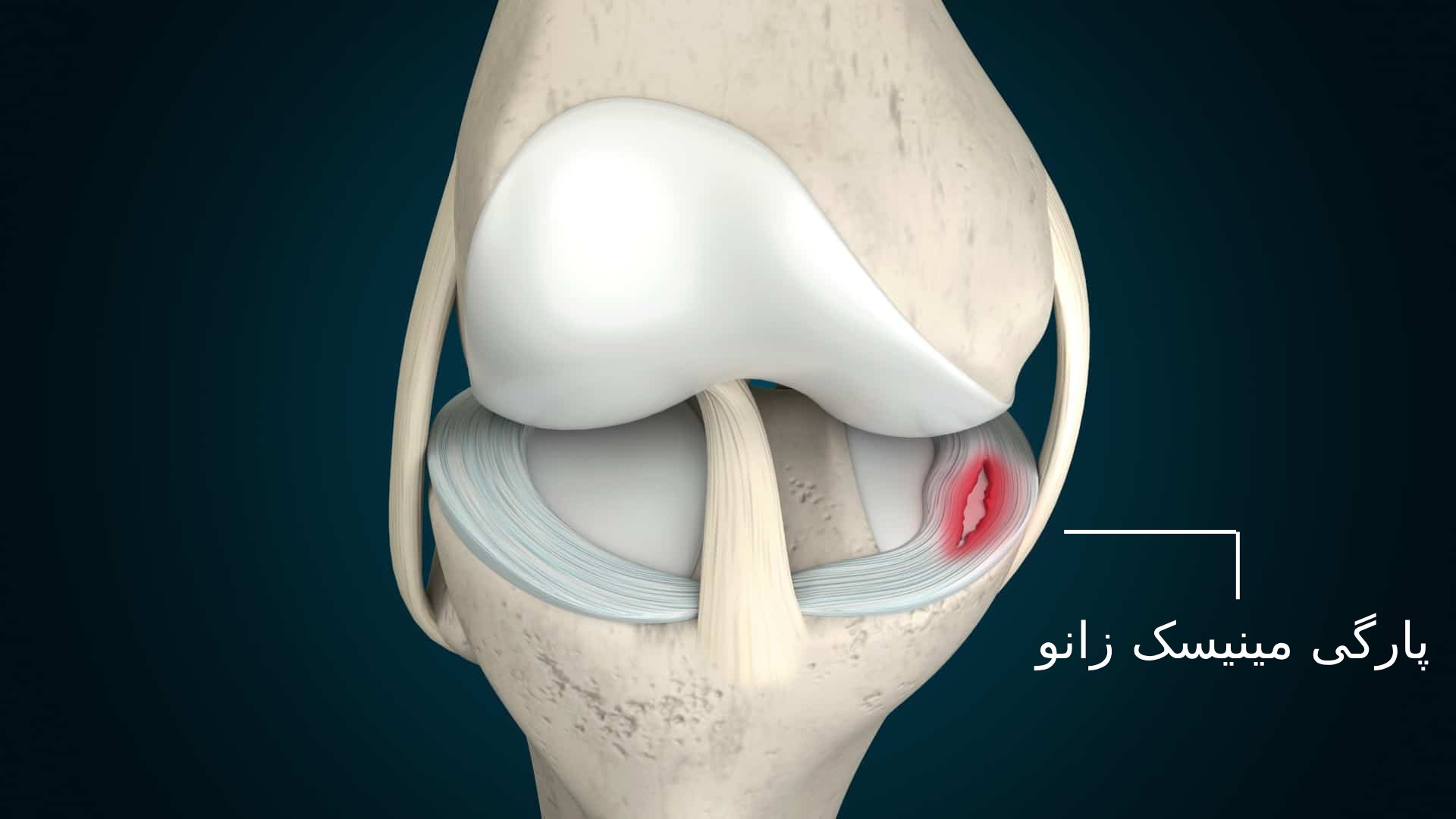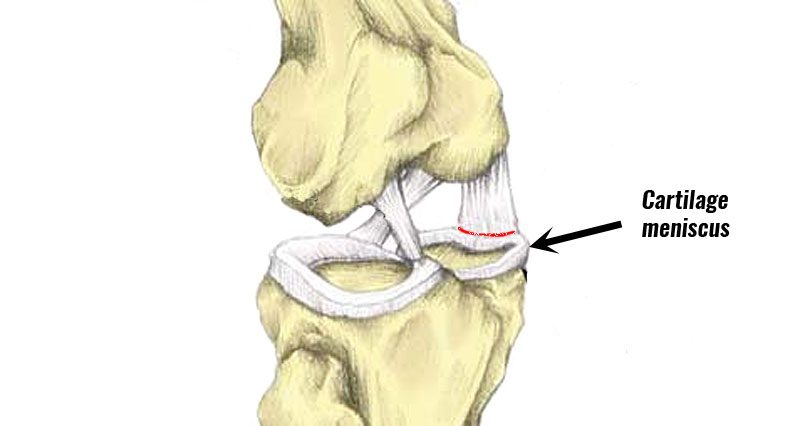Understanding Meniscus Tears

The meniscus is a C-shaped piece of cartilage that acts as a shock absorber and helps to stabilize the knee joint. It sits between the femur (thighbone) and the tibia (shinbone). There are two menisci in each knee, a medial meniscus on the inner side of the knee and a lateral meniscus on the outer side.
Anatomy and Function
The meniscus is made of tough, rubbery cartilage that helps to distribute weight evenly across the knee joint. It also helps to reduce friction between the bones and provides stability to the knee. When the meniscus is torn, it can cause pain, swelling, and instability in the knee.
Types of Meniscus Tears
There are different types of meniscus tears, each with its own cause and symptoms.
Types of Meniscus Tears
- Horizontal Tear: This type of tear occurs across the width of the meniscus, often caused by a twisting injury.
- Vertical Tear: This tear runs from the top to the bottom of the meniscus, often caused by a direct impact to the knee.
- Radial Tear: This tear is a combination of a horizontal and vertical tear, resembling a radial spoke on a wheel.
- Degenerative Tear: This type of tear occurs over time due to wear and tear on the meniscus, often in older individuals.
Causes of Meniscus Tears
Meniscus tears can occur due to a variety of causes, including:
- Twisting injury: A sudden twisting motion of the knee, such as during sports or a fall.
- Direct impact: A direct blow to the knee, such as from a car accident or a fall.
- Degeneration: Over time, the meniscus can become thinner and weaker, making it more susceptible to tearing.
Symptoms of Meniscus Tears
The symptoms of a meniscus tear can vary depending on the severity of the tear. Common symptoms include:
- Pain: Pain in the knee, often localized to the inner or outer side of the knee.
- Swelling: Swelling around the knee, which may be immediate or develop over time.
- Stiffness: Stiffness in the knee, making it difficult to bend or straighten the knee.
- Locking: The knee may lock in a bent position, making it difficult to straighten.
- Clicking or popping: A clicking or popping sensation in the knee when moving.
- Instability: Feeling like the knee is giving way or unstable.
Grading System for Meniscus Tears
Meniscus tears are graded based on their severity and the amount of damage to the meniscus. The grading system helps doctors determine the best course of treatment.
Grading System
- Grade 1: A small, partial-thickness tear that does not affect the function of the meniscus.
- Grade 2: A larger, partial-thickness tear that may affect the function of the meniscus.
- Grade 3: A complete tear through the meniscus, which may affect the function of the knee.
Diagnosis and Treatment Options

Diagnosing and treating a meniscus tear involves a comprehensive approach, encompassing a thorough medical evaluation, imaging tests, and tailored treatment strategies. The goal is to identify the extent of the tear, understand its impact on joint function, and determine the most effective treatment pathway for the individual.
Diagnostic Methods
Diagnosing a meniscus tear typically involves a combination of physical examination, imaging tests, and, in some cases, arthroscopy.
- Physical Examination: A physical examination is crucial for assessing the symptoms, range of motion, and stability of the knee joint. The doctor will carefully examine the knee, checking for tenderness, swelling, and pain with specific movements. They will also assess the knee’s stability and perform tests to evaluate the ligaments and other structures.
- Imaging Tests: Imaging tests provide detailed views of the meniscus and surrounding structures, helping to confirm the diagnosis and determine the severity of the tear.
- Magnetic Resonance Imaging (MRI): MRI is the gold standard for visualizing the meniscus. It provides detailed images of the soft tissues, including the meniscus, ligaments, and cartilage. MRI can accurately detect tears, their location, and their extent.
- X-ray: While X-rays primarily show bone structures, they can help rule out other conditions, such as fractures or osteoarthritis, that may mimic the symptoms of a meniscus tear. X-rays are typically used in conjunction with other diagnostic tools.
- Arthroscopy: Arthroscopy is a minimally invasive surgical procedure that allows the doctor to directly visualize the inside of the knee joint. A small camera and instruments are inserted through small incisions, providing a clear view of the meniscus. Arthroscopy is often used to confirm the diagnosis, assess the severity of the tear, and perform necessary repairs or removal of damaged tissue.
Treatment Options
Treatment options for meniscus tears vary depending on factors such as the severity of the tear, the patient’s age, activity level, and overall health.
- Conservative Management: For less severe tears or those that are not causing significant symptoms, conservative management is often the first line of treatment. This may involve:
- Rest: Avoiding activities that put stress on the knee joint is crucial for allowing the injured tissues to heal.
- Ice: Applying ice to the affected area can reduce swelling and inflammation.
- Compression: Using a compression bandage can help control swelling and provide support.
- Elevation: Keeping the leg elevated above the heart can reduce swelling.
- Medications: Over-the-counter pain relievers, such as ibuprofen or naproxen, can help manage pain and inflammation.
- Physical Therapy: Physical therapy plays a vital role in restoring function and improving strength after a meniscus tear. A physical therapist can design a personalized exercise program that focuses on:
- Range of motion exercises: To improve flexibility and reduce stiffness.
- Strengthening exercises: To build muscle strength around the knee joint.
- Proprioceptive exercises: To improve balance and coordination.
- Surgical Intervention: In cases of severe tears, those that are causing significant pain or instability, or those that do not respond to conservative treatment, surgery may be necessary. Surgical options include:
- Meniscectomy: This procedure involves removing the damaged portion of the meniscus. It is often used for tears that are too large to repair or for tears in the outer portion of the meniscus.
- Meniscus Repair: This procedure involves stitching the torn meniscus back together. It is typically used for tears in the inner portion of the meniscus, which is better supplied with blood and has a higher chance of healing.
Factors Influencing Treatment Choice
The choice of treatment for a meniscus tear is based on a comprehensive evaluation of the individual’s condition and needs. Factors that influence treatment decisions include:
- Severity of the Tear: The extent and location of the tear play a significant role in treatment decisions. Smaller, less severe tears may be treated conservatively, while larger or more complex tears may require surgery.
- Age: The patient’s age can influence treatment options. Younger individuals with active lifestyles may be more likely to undergo surgery to repair the tear, while older individuals with less active lifestyles may opt for conservative management.
- Activity Level: The patient’s activity level is a key consideration. Individuals who engage in high-impact activities may require more aggressive treatment to restore function and prevent further injury.
- Overall Health: Underlying health conditions, such as diabetes or arthritis, can impact the healing process and treatment options.
Recovery and Rehabilitation: Meniscus Tear

The recovery process after a meniscus tear depends on the severity of the tear and the treatment chosen. For non-surgical treatment, the focus is on pain management and restoring knee function through physical therapy. Surgical treatment involves repairing or removing the torn meniscus, followed by a period of rehabilitation to regain full knee function.
Post-Operative Care
After surgery, your doctor will provide instructions for post-operative care, which may include:
- Rest and elevation: Avoid putting weight on your injured knee for a few days or weeks, as directed by your doctor. Elevate your leg to reduce swelling.
- Ice application: Apply ice to the injured knee for 15-20 minutes at a time, several times a day, to reduce swelling and pain.
- Compression: Wear a compression bandage or brace to help control swelling and provide support.
- Pain medication: Your doctor may prescribe pain medication to help manage pain and discomfort.
Physical Therapy Exercises
Physical therapy plays a crucial role in meniscus tear recovery. Your physical therapist will design a personalized program tailored to your specific needs and progress. Exercises may include:
- Range of motion exercises: These help restore flexibility and movement in your knee joint.
- Strengthening exercises: These help build muscle strength around your knee, which is essential for stability and support.
- Proprioceptive exercises: These help improve your balance and coordination, allowing you to regain control over your knee joint.
- Functional exercises: These help you return to your desired activities, such as walking, running, or sports.
Managing Pain and Swelling
Managing pain and swelling is crucial for a successful recovery. Here are some tips:
- Follow your doctor’s instructions: Adhere to the prescribed pain medication and follow the recommended rest and ice application schedule.
- Elevate your leg: Keep your leg elevated whenever possible to reduce swelling.
- Compression: Wear a compression bandage or brace to help control swelling and provide support.
- Avoid strenuous activities: Avoid activities that cause pain or increase swelling.
- Use a cane or crutches: If necessary, use a cane or crutches to reduce stress on your knee.
Importance of Following a Structured Rehabilitation Program
Following a structured rehabilitation program is essential for optimal recovery. This program helps you:
- Regain full knee function: Physical therapy exercises help strengthen muscles, improve range of motion, and enhance stability.
- Prevent further injury: A structured program helps ensure that your knee is properly rehabilitated, reducing the risk of re-injury.
- Return to your desired activities: By following a structured program, you can gradually increase your activity levels and safely return to your desired activities.
- Reduce pain and swelling: Regular exercise and proper rehabilitation techniques help manage pain and reduce swelling.
A meniscus tear is a common knee injury, often caused by sudden twisting or impact. It can be debilitating, requiring surgery in some cases. The impact of a meniscus tear is evident in the jj mcarthy injury , where he suffered a significant setback.
Understanding the anatomy of the knee and the function of the meniscus can help prevent these injuries, ensuring athletes can continue pursuing their passions.
A meniscus tear can be a debilitating injury for any athlete, especially one with the potential of JJ McCarthy. The rising star quarterback’s impressive performance on the field is a testament to his talent and dedication, and you can see just how dominant he is by checking out his college stats here.
Thankfully, McCarthy seems to have avoided any major injuries so far, allowing him to focus on honing his skills and continuing to impress on the gridiron.
